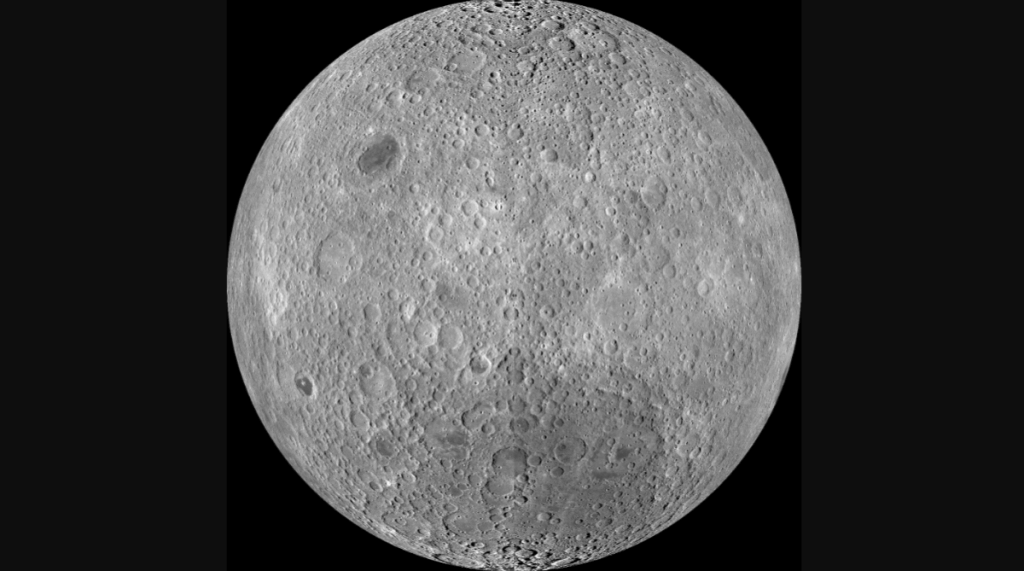
Radio telescope on moon’s far side will peer into universe’s ‘Dark Ages’ (Image Credit: Space.com)
A few years from now, a small radio telescope on the far side of the moon could help scientists peer into the universe’s ancient past.
The moon instrument, called the Lunar Surface Electromagnetics Experiment-Night (LuSEE-Night), is a pathfinder being developed by the U.S. Department of Energy’s Brookhaven and Lawrence Berkeley National Laboratories, the Space Science Laboratory at the University of California, Berkeley, and NASA’s Science Mission Directorate.
LuSEE-Night is currently scheduled to launch on a private robotic lunar lander in late 2025 (opens in new tab). After it touches down on the moon’s far side, it will attempt to gather first-of-their-kind measurements from the “Dark Ages” of the universe.
The Dark Ages refers to a time in the early universe, between about 400,000 and 400 million years after the Big Bang, before stars and galaxies began to fully form. From the far side of the moon, LuSEE-Night will use onboard antennas, radio receivers and a spectrometer to measure faint radio waves from the Dark Ages, in search of what scientists are calling the Dark Ages Signal.
“So far, we can only make predictions about earlier stages of the universe using a benchmark called the cosmic microwave background. The Dark Ages Signal would provide a new benchmark,” Brookhaven physicist Anže Slosar said in a statement (opens in new tab). “And if predictions based on each benchmark don’t match, that means we’ve discovered new physics.”
LuSEE-Night isn’t necessarily expected to make such big breakthroughs all by itself; after all, it’s a pathfinder designed to pave the way for more ambitious instruments down the road. The larger project could end up shedding light on such big cosmic questions as the nature of dark energy and the creation of the universe, team members said.
The far side of the moon is a great place to look for the faint signals that could hold such clues, because it offers something Earth cannot: a deep and profound silence. Constant radio bombardment across our planet creates an environment too noisy for the supersensitive instruments LuSEE-Night will use. However, the faraway locale presents challenges as well.
Surviving there takes a feat of engineering. Though sometimes mislabeled “the dark side” of the moon, the part of Earth’s natural satellite that faces away from us in the night sky does in fact have a day/night cycle, each phase of which lasts about 14 Earth days. Temperatures on the far side of the moon fluctuate between around 250 and minus 280 degrees Fahrenheit (121 and minus 173 degrees Celsius).
So LuSEE-Night will have to be designed to withstand two weeks of intensely unforgiving, non-stop lunar-day sun, as well as remain powered through two weeks of rigidly cold darkness — and do this over and over again. The mission design lifetime on the lunar surface is two years.
“In addition to the significant potential science return, demonstration of the LuSEE-Night lunar night survival technology is critical to performing long-term, high-priority science investigations from the lunar surface,” Joel Kearns, deputy associate administrator for exploration in NASA’s Science Mission Directorate, said in the same statement.
When it’s ready, LuSEE-Night will launch on a future commercial lunar payload services (CLPS) mission, an initiative from NASA that, according the space agency’s website, “allows rapid acquisition of lunar delivery services from American companies for payloads that advance capabilities for science, exploration or commercial development of the moon.”
Follow us @Spacedotcom (opens in new tab), or on Facebook (opens in new tab) and Instagram (opens in new tab).





